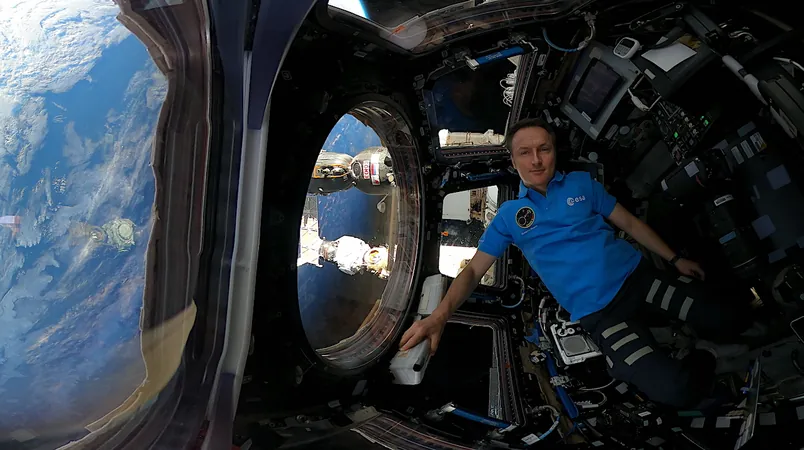
Shocking Discovery: Protoplanetary Disks are Smaller Than Ever Imagined!
2025-03-26
Author: Li
In a groundbreaking study, astronomers using the Atacama Large Millimeter/submillimeter Array (ALMA) have uncovered that many protoplanetary disks—where new planets are formed—are significantly smaller than previously believed.
What They Found: The Surprising Dimensions of Protoplanetary Disks
The findings show that two-thirds of the examined disks are compact, with an average radius around six astronomical units—similar to the orbit of Jupiter.
In fact, the smallest disk discovered measures a mere 0.6 astronomical units in radius, which is even less than the distance from the Earth to the Sun.
This sharply contrasts with prior assumptions that many disks extended far beyond the orbit of Neptune.
Osmar M. Guerra-Alvarado, a Ph.D. candidate involved in the research, noted, 'These results completely change our view of what a 'typical' protoplanetary disk looks like.'
The study indicates that the most visible and bright disks are not the norm; instead, compact disks without noticeable gaps—where giant planets might usually form—are far more abundant.
Stars and Super-Earths: A Closer Relationship?
Most of the small disks were found orbiting low-mass stars, which make up around 10% to 50% of the mass of our Sun.
This discovery has massive implications for the formation of 'super-Earths,' which are rocky planets that can be up to ten times the mass of Earth.
Mariana B. Sanchez, a postdoc at Leiden Observatory, emphasized that these compact disks may provide ideal conditions for super-Earth development because the dust is concentrated closer to the star, where these planets are commonly found.
Interestingly, the research suggests that our own solar system's formation involved a large protoplanetary disk capable of giving rise to massive gas giants like Jupiter and Saturn, yet it did not produce any super-Earths.
This aligns with recent theories that super-Earths may be the dominant type of planet found throughout the universe.
Linking Protoplanetary Disks and Exoplanets
This research establishes a vital connection—dubbed the 'missing link'—between the observations of protoplanetary disks and the ever-expanding catalog of exoplanets.
Assistant Professor Nienke van der Marel pointed out that the prevalence of small disks lacking gaps indicates that most stars do not have the giant planets that form within larger disks.
This correlation aligns with the observed exoplanet populations around older stars.
Previous high-resolution studies predominantly concentrated on brighter, larger disks, which resulted in a biased understanding of these cosmic structures.
The current research utilized ALMA's most detailed observations ever, recorded in 2023-2024, enabling astronomers to create an encompassing survey of all disk sizes for the first time.
Final Thoughts: A New Era in Astronomy?
As scientists continue to unravel the complexities of protoplanetary disks, this study marks a significant turning point in our understanding of planetary formation and the diversity of celestial bodies in our universe.
With the newfound knowledge that smaller disks are the majority, our perception of planet formation stands to transform dramatically—certainly leaving astronomers buzzing with questions about what lies ahead.
Stay tuned for more updates as we delve deeper into the cosmic mysteries that define our universe!


 Brasil (PT)
Brasil (PT)
 Canada (EN)
Canada (EN)
 Chile (ES)
Chile (ES)
 Česko (CS)
Česko (CS)
 대한민국 (KO)
대한민국 (KO)
 España (ES)
España (ES)
 France (FR)
France (FR)
 Hong Kong (EN)
Hong Kong (EN)
 Italia (IT)
Italia (IT)
 日本 (JA)
日本 (JA)
 Magyarország (HU)
Magyarország (HU)
 Norge (NO)
Norge (NO)
 Polska (PL)
Polska (PL)
 Schweiz (DE)
Schweiz (DE)
 Singapore (EN)
Singapore (EN)
 Sverige (SV)
Sverige (SV)
 Suomi (FI)
Suomi (FI)
 Türkiye (TR)
Türkiye (TR)
 الإمارات العربية المتحدة (AR)
الإمارات العربية المتحدة (AR)